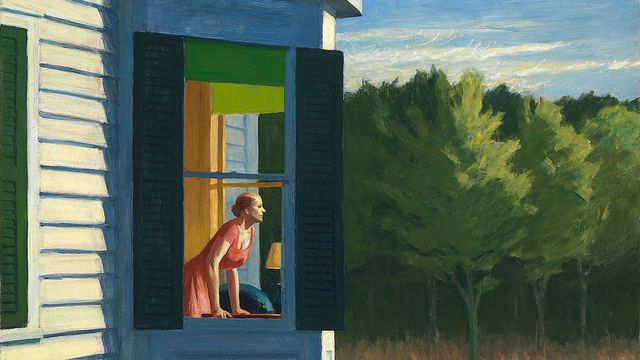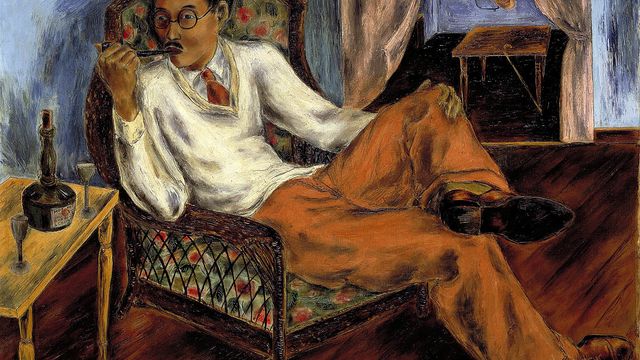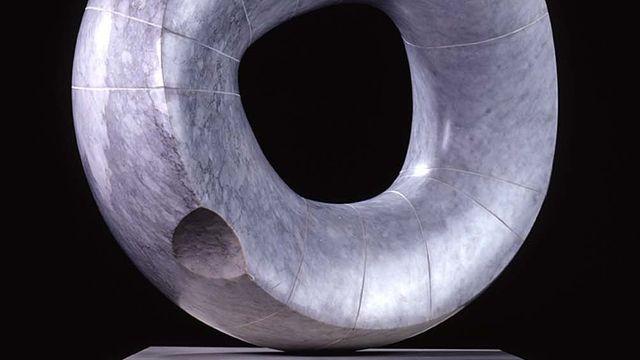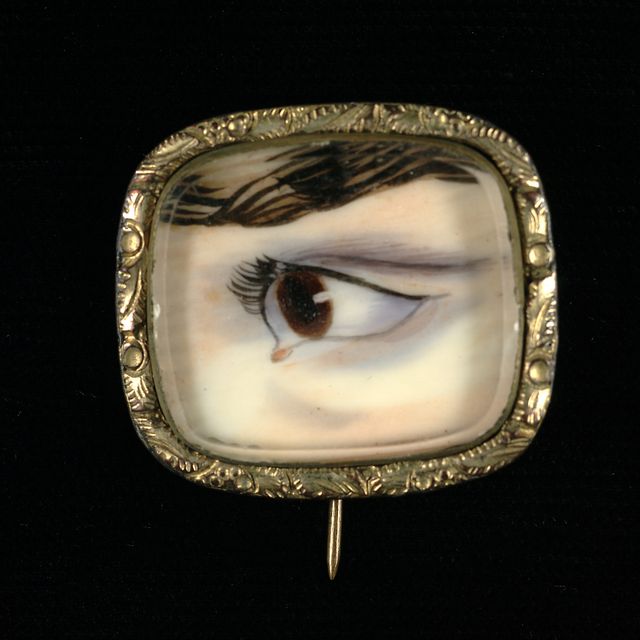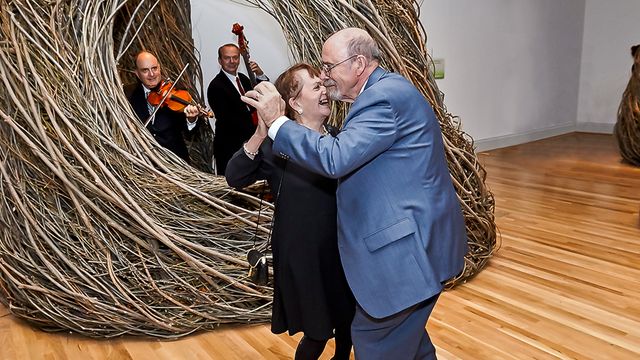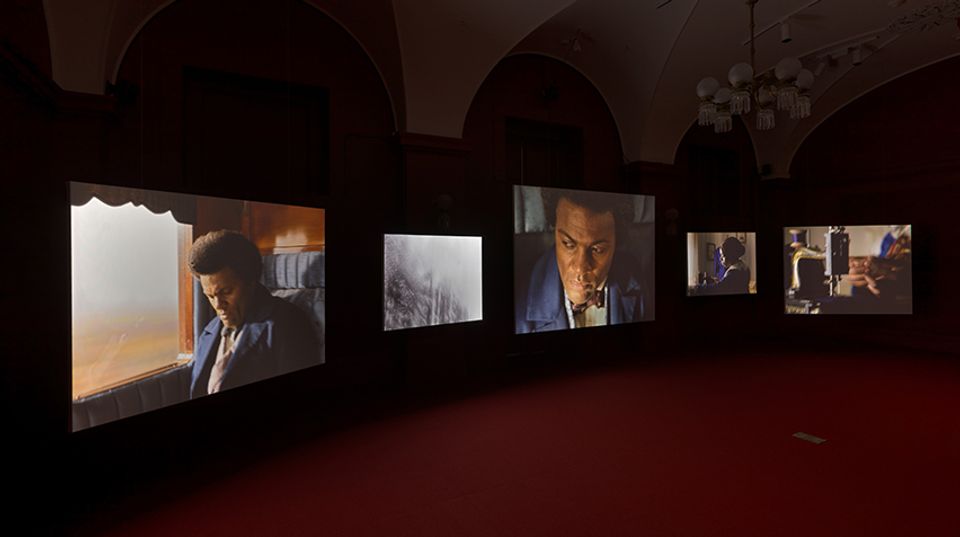
Ann Creager uses microtweezers to conserve Gene Davis's Two Part Blue.
Gene Davis's Two Part Blue was given to American Art in the ‘90s as part of the late artist’s estate. The painting came with a surprise: it seemed to have some white accretions on its surface. (Viewers can observe the restoration of this piece in person at the Lunder Conservation Center; that's where I spotted it.)
Microscopic examination revealed that the white specks were tiny areas of exposed fabric from which the paint had flaked away. The painting appeared to be abraded in places, according to Ann Creager, a conservator at the Lunder Conservation Center.
Creager says that the paint was likely scuffed when the artist rolled the canvas to store it. Restoring the painting includes using microtweezers to pluck the fibers that have separated from the support and then painting over the remaining bare threads using watercolor and gouache. Opaque paints, like oils and acrylics (and in this case, the original Magna colors used by Davis) are eschewed by conservators, who almost never make such permanent changes to a piece.
Creager has her eye on two other anomalies as well. Under the microscope she sees specks of alien paint, which she believes were likely introduced before the painting was rolled; these flecks are too small to see with the naked eye, and the conservator will remove them using the microtweezers. There's also a "shiny substance" that she can't identify without further chemical testing. (She notes that she hasn't "worked that far up the stripe yet.")
That was enough for me. I love that there's an arena within art appreciation for wonks, a branch rooted in chemistry and empiricism and microscopic examination. As conservators will tell you, there are other intangibles associated with art conservation: "We always brag to the art history majors that the conservators get to touch things and art history majors only get to see slides."



